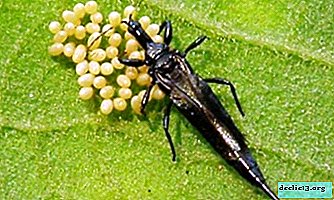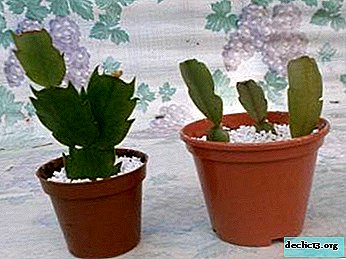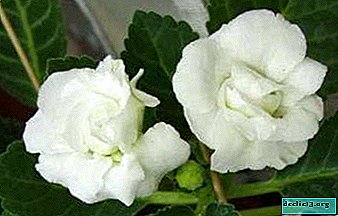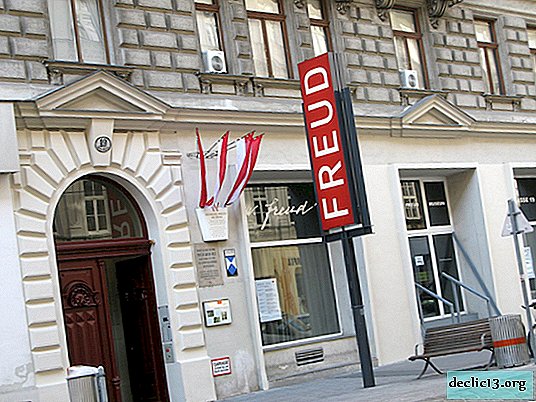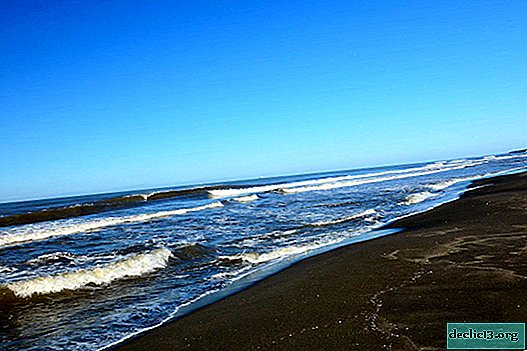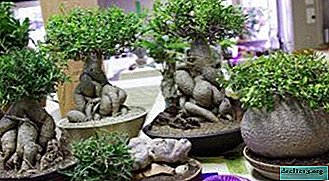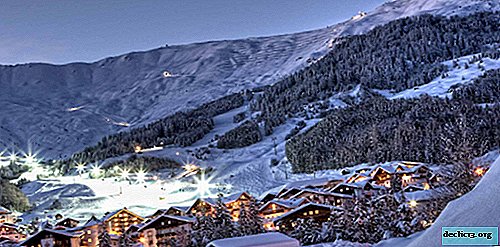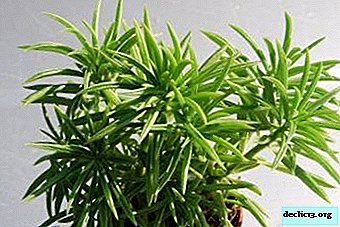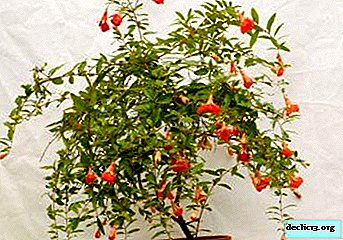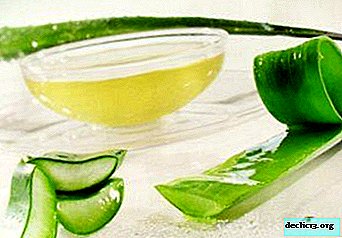Stonecrop - a plant of "unobtrusive" beauty: varieties and species with photos
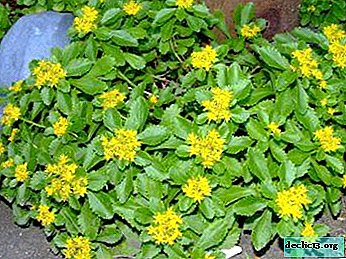 Stonecrop (sedum) is a widespread plant in the family Crassulaceae. It grows mainly in the temperate zone of the Northern Hemisphere, but there are several species whose homeland is the semi-desert of South America.
Stonecrop (sedum) is a widespread plant in the family Crassulaceae. It grows mainly in the temperate zone of the Northern Hemisphere, but there are several species whose homeland is the semi-desert of South America.
For many years, stonecrops have been widely used for growing in gardens and flower gardens, as well as for indoor floriculture. And breeders delight gardeners with novelties of decorative shapes and colors of sedum.
Let’s talk today about the variety of sedum, its many types and features. You can also watch a useful video on this topic.
What are the sedums?
Among the variety of sedums there are annual, biennial and perennial plants, grassy, shrub and shrub forms. It can be ground covers, similar to flowering rugs, varieties, ampelous or upright plants.
 Sedum leaves are characterized by meatiness, which allows plants to survive in difficult climatic conditions, but the shape of the leaf plate is different. You can meet such variations:
Sedum leaves are characterized by meatiness, which allows plants to survive in difficult climatic conditions, but the shape of the leaf plate is different. You can meet such variations:
- Balloons.
- Kegs.
- Needles.
- Spatula
Sedum has a variety of shapes and colors of flowers. The stonecrops are small, white, yellow, pale pink and raspberry in color, resemble small stars. And for the students, in the form of bells, but of the same color scheme. Sedum flowers are collected in flat inflorescences (dense or loose).
Further, you can familiarize yourself in more detail with the names and photos of indoor sedums, as well as varieties grown in gardens and other natural conditions.
Ground cover
A very popular variety of plants among gardeners. It is very convenient to use it when you need to decorate voids in flower beds or draw up near-stem circles of garden trees. They got their name because, overgrowing, they cover the entire free land with a continuous low carpet, over which, during the flowering period, peduncles with numerous small inflorescences rise.
Ground cover sedums can be found both in the wild and in flower beds. The most prominent representatives are:
- Stonecrop Lydian (Sedum lydium).
- Stonecrop False (Sedum spurium).
- Stonecrop White (Sedum album).
These plants can be found both in the wild and in flower beds.
For the cultivation of ground covers, you should choose not very rich soil., or artificially limit the zone of their growth. Otherwise, these plants will capture all the free space around.
With erect stems
Plants from this group can form dense clumps, but more often only a dense bush is formed, which falls apart at the time of blooming.
Prominent

Prominent (Sedum spectabile) attributed to graves - The prominent (Hylotelephium spectabile). One of the most common species with erect stems. Plant height 30-60 cm. Inflorescences are large, dense, consists of small pinkish or purple flowers. The leaves are large, oblong, with a bluish tint. It blooms from late August to the onset of frost.
We recommend watching a video about the features of the sedum (stonecrop) prominent:
Tenacious

Tenacious (Sedum aizoon) - a perennial herb with strong stems, 25-40 cm high. The rhizome is short and thick. The leaves are rhomboid in shape, with small denticles along the edge. The flowers are painted in yellow-orange tones. Under natural conditions found in the Far East and Siberia.
Important: Stonecrop tenacious - a poisonous plant.Three Leaf Fat

Now this species of a three-leafed, pururic and purple plant is called a three-leaved stencil (Hylotelephium triphyllum).
The plant is erect, 40-60 cm high. The foliage is succulent, fleshy, oblong. The color of the leaves is green or with a purple tint. In winter, the aerial part of the plant dies. Blossoms in the second half of summer with pink or purple-red flowers, collected in large inflorescences. The plant is unpretentious, tolerates poor lighting and soil poverty..
Ordinary

Ordinary, or telefium (Sedum telephium) - perennial with tuberous roots and single, erect stems 40-60 cm high. The leaves are oval-oblong, serrated along the edge. The flowers are red or raspberry, collected in a dense inflorescence. It blooms in the second half of summer. The plant tolerates winter well and is distributed almost throughout Eurasia.
“Jose Obergin”

"Jose Obergin" (Sedum Jose Aubergine) - a perennial plant with a height of 30-40 cm. The leaves are wide, burgundy with a purple tint. Shoots are powerful, upright. Blossoms in August-September with small orange-red flowers with white dusting, collected in large loose inflorescences. Very decorative, unpretentious, tolerates drought and low temperatures.
Ice Ruffles

Ice Ruffles sedum has strong erect shoots of red color and a height of 30-50 cm. The leaves are dark green with a light border on the edge and a red border. Closer to fall, the leaves become bronze-red. It blooms from July to September with small cream-colored flowers collected in dense corymbose inflorescences. It grows well in sunny places, winters without shelter.
Moonlight Serenade

A herbaceous plant about 45 cm high. The stems are erect, the foliage is blue-green, with age it turns scarlet. In shape, the leaves are lanceolate, with small denticles along the edges. Inflorescence burgundy, cream-pink flowers. It blooms from July to October. Sedum loves open sunny places and moderately fertile soil.
Bezdey Party

Sedum “Sedum Birthday Party” is a perennial plant with stems up to 30 cm high. The foliage is fleshy, purple with brown edges. Blooms profusely in the second half of summer. The flowers are bright pink, collected in large lush inflorescences. The plant grows well on any soil, loves the sun, but tolerates planting on the shaded area. It does not require shelter for the winter.
Ruprecht Perennial

Ruprecht's hatchback (Hylotelephium decumbens) - perennial with densely leafy shoots 20-40 cm high. The leaves are ovoid, often hugging the stem. It blooms in July - August with white-pink, yellow-white or greenish-white flowers, collected in wide corymbose inflorescences.
The accountant is big

Hylotelephium maximum is a perennial herb with erect stems 60-80 cm high. The leaves are dark green, elongated-oval with a rounded base, slightly dentate at the edges. It blooms from July to September. Small, white-pink flowers are collected in dense corymbose-paniculate inflorescences.
Unpretentious varieties
Scrubs are unpretentious in leaving. Easily adapt to the proposed growing conditions. But there are especially tenacious species that are even recommended to be grown, for example, on poorer soils. Otherwise, they will flood the entire garden, oppressing neighboring plants.
Tart

Stonecrop (Sedum acre) is a creeping perennial plant with a large number of thin, branched stems, up to 15 cm high. The leaves are small, fleshy. There are forms with white and yellow leaves. It blooms almost all summer, forming a colored carpet of golden yellow star-shaped flowers collected in umbrella inflorescences.
This type of stonecrop is very tenacious, quickly and easily propagated by self-sowing, prefers dry, elevated places with sandy soil. Scum Sedum (Sedum acre) can release toxic substances that inhibit neighboring plants.
A popular variety is Yellow Queen. The leaves are golden green, very densely arranged.
We recommend watching a video about the features of sedum (stonecrop) caustic:
White

Stonecrop white (Sedum album) - ground cover perennial, forms a flat curtain 15-20 cm high. The foliage is green or red-green, fleshy. It blooms in June and July. The flowers are small, star-shaped, white-pink, collected in large paniculate inflorescences on long reddish stems.
We recommend watching a video about the features of sedum (stonecrop) white:
Spanish

Stonecrop Spanish (Sedum hispanicum) - a two-year-old herbaceous plant. In rich soils, it grows rapidly. It propagates well by self-sowing. Forms a curtain 5-15 cm high.
Leaves are pale green, light yellow, pinkish-gray or purple depending on the variety. The flowers are white or pinkish. It blooms in June-July irregularly and mildly. In the middle lane, it winters poorly, often freezes or vomits. Mostly Stonecrop Spanish is used as a seasonal groundcover.
Bent away

Stonecrop bent or rocky (Sedum reflexum) is a perennial herb with weakly branched shoots up to 15-25 cm high. The leaves are fleshy, bluish, awl-shaped. Blooms in June - July with yellow corymbose inflorescences.
Popular varieties:
- "Angelina". Green-yellow leaves with orange tints. Autumn is getting more orange.
- "Blue Spruce". The leaves of the sizo are blue.
- "Cristatum". The stalk is very thickened and flattened. The leaves are light green in color, darken by autumn.
- "Sea Gold". The leaves are bluish with reddish-lilac tips, in young shoots during the growth of the tops are creamy.
- "Atropurpurea". In sunlight, young leaves become pronounced purple.
Hexagon

Stonecrop six-sided (Sedum sexangulare) - an evergreen perennial with a height of 15-20 cm. Creeping and creeping shoots, slightly rise on the tops. The leaves are fleshy, awl-shaped. The color of the leaves is juicy green, when grown in bright sunlight - reddish. It blooms in July. The flowers of this sedum are yellow and collected in dense inflorescences.
Red painted

Sedum red-colored (Sedum rubrotinctum) - a perennial undersized shrub with creeping shoots. Leaves, fleshy and reddish, are located in the apical rosettes. The plant acquires a more saturated red tint in bright sunlight. Flowering begins in mid spring. The flowers are bright yellow with a reddish tinge.
Important: Sedum red-colored is toxic and irritates if swallowed or touched.A popular variety is Aurora. In the cultivar Aurora (Aurora), the color of the leaves is pearly pink with a silver sheen.
White pink

Stonecrop white-pink (Sedum alboroseum) - a perennial herb, 35-60 cm high. The stalk is powerful, the leaves are oblong-ovate. The inflorescence is umbrella-paniculate, consists of small flowers of white or pink color. Flowering occurs in July-August.
Rare specimens
Lydian

On poor soils, Lydian sedum (Sedum lydium) grows well. It is a perennial evergreen. It forms a carpet 4-5 cm high with creeping shoots. The leaves are green, with a large amount of sunny red. The flowers are white and pink. Flowering begins in May.
Runaway

Currently, the Sedum Falls belongs to the genus Zhivuchnik (Petrosedum stoloniferus). The shoots are branched, easily rooted during transplantation and grows rapidly, forming continuous rugs up to 10 cm high. Blooms in June - August. On peduncles 15 cm high are pale pink star-shaped flowers.
Container plants
For growing in containers and at home, ampel forms of sedum are most often used. These plants are unpretentious and well tolerate the dry air of apartments, due to the moisture reserves in their fleshy leaves.
Shrubby Makina

Stonecrop Makina (Sedum makinoi) - this is one of the most small-leaved varieties of sedum. Used as a decorative foliage plant, and flowers that appear in winter are pruned. When transplanted, the plant takes root quickly and covers the entire surface of the container. Leaf color may vary by variety.
Oregon

Stonecrop Oregon (Sedum oreganum) in the wild grows on stony ledges. It forms dense rugs 10-15 cm high. Shoots are fragile, covered with bare, fleshy leaves of a rounded shape. In the sun, green leaves turn red. It blooms in July-August. The flowers are small, yellow-orange, collected in small inflorescences on short peduncles.
We recommend watching a video about the features of sedum (stonecrop) Oregon:
Hybrid Xenox

The height of the hybrid sedum "Yellow Xenox" (Sedum hybride Yellow Xenox) reaches 40 cm. The leaves are dense, fleshy, in the spring greenish-lilac, then dark purple. Inflorescences are corymbose, flowers are creamy yellow, small. It blooms from August to October. Suitable for sunny places with poor soils. Yellow Xenox is appreciated for drought tolerance and unpretentiousness.
Conclusion
Sedum can be found in gardens and greenhouses around the world. Their unobtrusive beauty, unpretentiousness, variability of colors, they attract more and more fans. Among the variety of species and varieties of stonecrop, everyone can find the plant that suits his garden.

